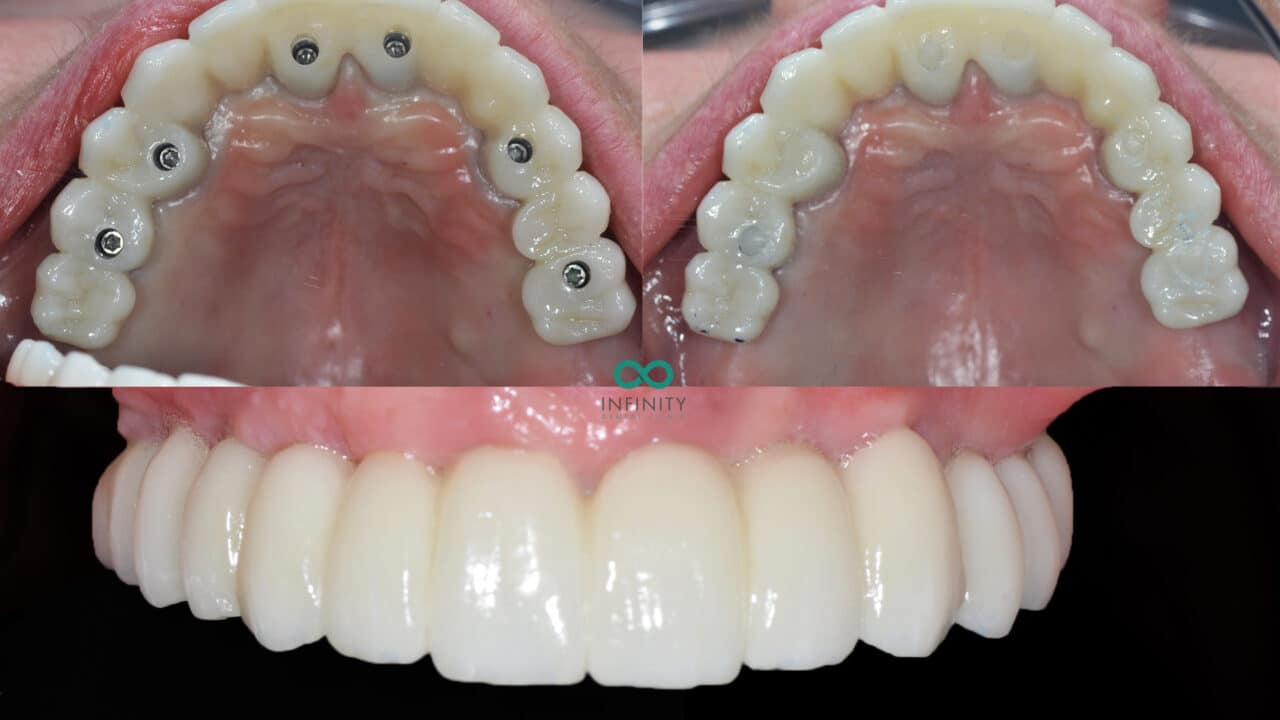What Does Dental Sense Do?
What Does Dental Sense Do?
Blog Article
6 Easy Facts About Dental Sense Shown
Table of ContentsHow Dental Sense can Save You Time, Stress, and Money.9 Simple Techniques For Dental SenseThe Dental Sense PDFsDental Sense Fundamentals Explained
are medical devices surgically dental implanted into the jaw to restore a person's capability to chew or their look. They give support for artificial (phony) teeth, such as crowns, bridges, or dentures. When a tooth is lost due to injury or disease, a person can experience complications such as quick bone loss, malfunctioning speech, or adjustments to eating patterns that result in discomfort.Oral dental implant systems include a dental implant body and dental implant joint and might also include a joint fixation screw. Root canal procedure. The dental implant body is operatively inserted in the jawbone instead of the tooth's origin. The dental implant joint is normally attached to the implant body by the abutment addiction screw and expands with periodontals into the mouth to sustain the connected synthetic teeth
(https://www.callupcontact.com/b/businessprofile/Dental_Sense/9469240)Structure of The Dental Implant System picking oral implants, speak with your oral supplier about the prospective advantages and threats, and whether you are a candidate for the treatment. Points to think about: Your overall health is an essential consider establishing whether you are an excellent prospect for dental implants, for how long it will take to heal, and how long the dental implant may stay in location.
Cigarette smoking may affect the recovery process and reduce the lasting success of the dental implant. The recovery process for the implant body may take a number of months or longer, during which time you usually have a temporary joint in location of the tooth. the oral implant procedure: Carefully adhere to the oral health directions provided to you by your oral company.
The Greatest Guide To Dental Sense
Implant failure can lead to the demand for an additional procedure to repair or change the dental implant system. Restores the ability to chew Recovers cosmetic appearance Aids keep the jawbone from diminishing because of bone loss Protects the wellness of the surrounding bone and gum tissues Helps keep surrounding (close-by) teeth stable Boosts lifestyle Damage to bordering natural teeth during dental implant positioning Injury to the surrounding cells throughout surgery, such as sinus perforation Injury during surgical treatment (for instance, fracture of surrounding jawbone) Poor feature, such as seeming like the teeth do not bite together normally A feeling that the tooth is loosened or twisting in area resulting from a joint screw loosening up Implant body failure (looseness of the implant body) as a pop over to this web-site result of systemic infection, which may be more probable in patients with uncontrolled diabetics issues because of neighborhood infection in bone and periodontals sustaining the dental implant body because of delayed recovery, which might be more probable in clients who smoke Difficulty cleaning up the periodontals around the dental implant, leading to inadequate dental health Without treatment gum disease Post-surgical feeling numb due to nerve impingement or damages Always inform health treatment service providers and imaging technicians that you have dental implants before any kind of magnetic resonance imaging (MRI) or x-ray procedures.
FDA is not familiar with any negative events reported for MRI or x-ray procedures with dental implants. Dental implants systems are commonly constructed from materials that adhere to international agreement requirements of the International Organization for Standardization (ISO) or ASTM International. These standards have details of what makes a safe material.

An oral implant is a structure that changes a missing out on tooth. With screw-like tools, the surgeon inserts an implant into the jawbone, and it works as an anchor for a man-made tooth, called a crown. A device called an abutment attaches the man-made tooth to the dental implant. The crown is tailor-made to fit the individual's mouth and match the shade of their teeth.
The Ultimate Guide To Dental Sense
Some people are not qualified for oral implant surgical procedure. It is for dental surgeons to operate on individuals with: acute illnessuncontrollable metabolic diseasebone or soft tissue condition or infectionIf these concerns are fixed, an individual can have the surgery. In, oral cosmetic surgeons abstain from operating on individuals with: If individuals with any one of the above go through oral implant surgery, there is a greater danger of the implant stopping working.

Dental dental implant surgical treatment is an individualized process. Give you time to recover. Connect the message and final crown, bridge or denture.
Next, your surgeon will thoroughly place the dental implant into your jaw. Your cosmetic surgeon will rearrange your gum tissues and shut the laceration with stitches. If your implant is near the front of your mouth, your dentist will make a short-term tooth for you to wear until you recover. By doing this, you won't have a gap in your smile while you recuperate.
The Greatest Guide To Dental Sense
Throughout the recovery phase, your jawbone must fuse to the dental implant. This procedure can take anywhere from 3 to 9 months.
Once your implant heals, your dental practitioner can attach the joint (little connector blog post) and your last reconstruction (crown, bridge or denture). This typically takes regarding one hour to complete and might need a 2nd minor surgical treatment. You should not feel any discomfort throughout your oral implant procedure since your service provider will utilize medicine to numb your periodontals.
Report this page